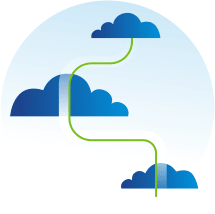Tag: Configuration
A Deep Dive into the Leading Web Hosting Control Panel Choices
Manually managing your servers can be a hassle. It requires you to either know a lot about hosting and server administration or to pay for and work with a professional who will do it on your behalf.
In this guide, you will be shown three simple methods to check the version of Apache running on your Linux server. Apache web server is a widely used software that powers many websites. Knowing your Apache version is important for security updates, compatibility, and troubleshooting. By following these methods, you can easily determine your Apache version and stay informed about your web server's software.
Best Practices for Firewall Rules
Basic Firewall Rules
In a firewall rule, the action component decides if it will permit or block traffic. It has an action-on-match feature. For example, if the traffic matches the components of a rule, then it will be permitted to connect to the network. It is essential to consider the potential security risks when modifying a firewall rule to avoid future issues. Following firewall rules best practices can help you maximize the effectiveness of your solution.
Apache 2 is an open source web server that is used to host websites and applications. It's known for being reliable, secure, and fast, making it a popular choice for those looking to install a web server quickly. Apache 2 is relatively easy to install and configure and runs on various platforms, including Linux, Windows, and Mac. It also supports multiple programming languages and databases and is used to develop complex applications and websites.
Cloud Servers vs Physical Servers: A Comparison
Choosing the right hosting environment is essential in positioning a business for successful growth. Companies operate differently based on clientele, the need to process information/orders, and how quickly market adaptation changes are needed. The common thread is the necessity of being digital to survive in today’s economy. Eventually, you’ll reach the crossroad of comparing a cloud server to a physical server to determine your best hosting environment.
How to Install, Enable, and Configure Webmin on Ubuntu 20.04
Webmin is a control panel that helps you administer your Linux servers using a browser-based interface. Using Webmin control panel features, you can manage DNS settings and user accounts and configure and change settings for standard packages.
How to Install and Configure LsyncD on AlmaLinux
LsyncD (Live Syncing Daemon) is used to sync or replicate both files and directories locally and remotely after a specific interval of time. LsyncD uses rsync and ssh in the backend.
What is Desktop-as-a-Service?

Introduction
As firms advance towards a more modern infrastructure, the Desktop-as-a-Service (DaaS) model is becoming an increasingly popular cloud-based system. Desktop-as-a-Service is a multi-tenant, cloud computing solution in which a service provider furnishes a virtual desktop to an end-user over the internet. A provider typically manages the infrastructure, including the security updates, available desktop applications, data storage, and backups. In specific instances, DaaS users manage these services individually. According to Gartner via Workspot:
What are the Five Criteria Of a Cloud Platform?
Cloud computing is a model for empowering users to access a useful, network-accessible, shared pool of resources that allows for quick changes to settings and configurations with minimal intervention from a service provider in an easy-to-maneuver self-service management interface.
Why Choose a VMware Cloud?

If you have been in the hosting industry for some time, you most likely had to upgrade your hosting package or resize your server at some point. As your business grows, so do the resources needed to run that business. Over the years, someone has most likely recommended a private cloud solution to you. You probably asked yourself why you would need a more expensive private solution like VMware cloud when you have a powerful VPS server or Dedicated server that is perfectly capable of handling your existing traffic.
Our Sales and Support teams are available 24 hours by phone or e-mail to assist.

